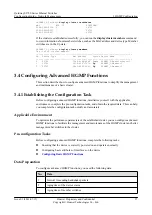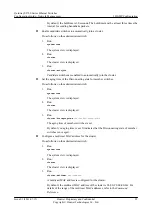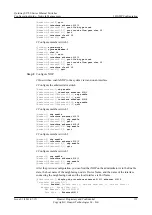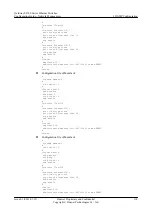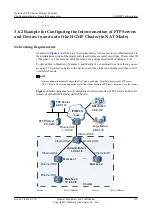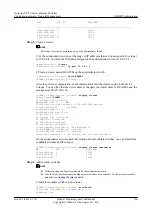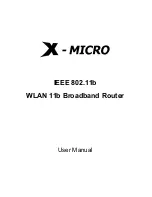
3.5.3 Debugging HGMP
When a fault occurs on NDP, NTDP, or a cluster, you can run the debugging command in the
user view to debug NDP, NTDP, or the cluster, view debugging information, locate the fault,
and analyze the cause.
Context
CAUTION
Debugging affects the performance of the system. After the debugging, run the
undo debugging
all
command to timely disable it.
When a fault occurs on NDP, NTDP, or a cluster, run the
debugging
command in the user view
to debug NDP, NTDP or the cluster, and you can view debugging information, locate the fault,
and then analyze the cause.
For more information about the
debugging
command, refer to the
Debugging Reference
.
Procedure
l
Run the
debugging ndp packet
[
interface
{
interface-type
interface-number
[
to
interface-type
interface-number
] } &<1-10> ] command to enable NDP debugging.
l
Run the
debugging ntdp
{
all
|
data
|
error
|
message
|
packet
[
verbose
] } to enable
NTDP debugging.
l
Run the
debugging cluster
{
all
|
event
|
handshake
|
member
|
mrc
|
nat
|
packet
|
state
} command or
debugging cluster
{
packet
|
handshake
|
mrc
} [
verbose
] command
to enable cluster debugging.
----End
3.6 HGMP Configuration Examples
This section provides several configuration examples of HGMP.
3.6.1 Example for Configuring Basic HGMP Functions for a Cluster
Networking Requirements
As shown in
, a carrier sets up a Layer 2 network through Layer 2 devices. Too many
Layer 2 devices are hard to be maintained and managed on the site. In addition, to save public
IP addresses, you cannot assign a public IP address to each device.
To effectively manage the Layer 2 network, you can create a cluster for the Layer 2 network
and manage the cluster through HGMP.
In this example, Administrator-1 is nearest to the network administrator and is therefore
appointed as the administrator switch.
Quidway S2700 Series Ethernet Switches
Configuration Guide - Network Management
3 HGMP Configuration
Issue 01 (2011-07-15)
Huawei Proprietary and Confidential
Copyright © Huawei Technologies Co., Ltd.
109



